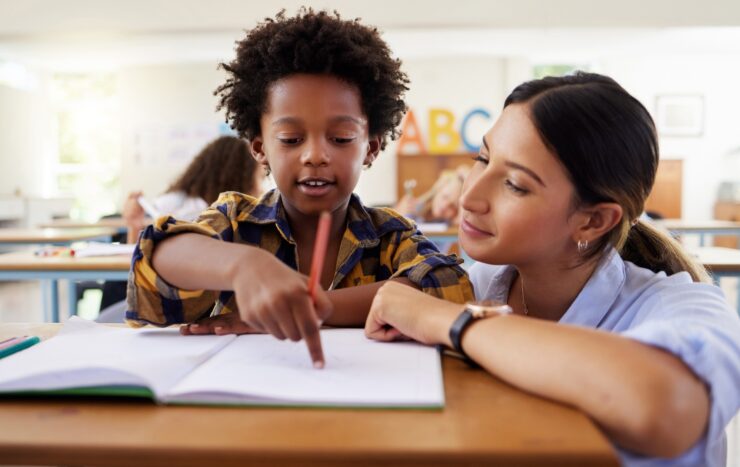How do children develop positive self-beliefs?
Building competencies, with adult support, can help

Why are children’s self-beliefs important?
Young people differ in how they perceive themselves. They may believe “I am good at math”, “I am good at sports”, or “I am a nice person”– or perhaps they are convinced that the opposite is true. These beliefs influence how they act in the world, how they respond to others, and which tasks they engage in. Self-beliefs in childhood and adolescence can influence important life outcomes years later, including school success, academic motivation, and health.
“Self-beliefs in childhood and adolescence can influence important life outcomes years later.”
When self-beliefs are robust and grounded in reality, they allow children to flourish. Holding positive beliefs about one’s own ability can be helpful when undertaking difficult tasks, while negative beliefs can make tasks more challenging. Students who don’t believe they are capable of accomplishing academic tasks tend to perform worse than their peers, even if their actual competencies are similar. Middle childhood is a particularly critical period in the development of self-beliefs, and a good time for interventions aimed at fostering positive self-beliefs.
We wanted to know more about the roles of parents, teachers, peers, individual characteristics, and the school environment in young people’s self-beliefs, hoping that this would shed light on the best ways to help students develop positive self-beliefs.
What underlies children’s self-beliefs?
We systematically reviewed a vast body of evidence on factors that affect children’s and adolescents’ self-beliefs. We looked at data from over 8,500 studies involving more than 16 million K–12 students.
Three factors seem to be most important for children’s and adolescents’ self-beliefs: Achievement outcomes, such as performance in school, and non-cognitive skills, such as social-emotional skills, were the two factors most closely associated with more positive self-beliefs, followed by perceived parental support.
Self-beliefs differ by gender, ethnicity, and cultural background. This is likely due to stereotypes – for example, the notion that girls are worse than boys at mathematics – rather than to anything inherent to a specific child. While the link between these background factors and children’s self-beliefs is rather weak, it appears that the environments children grow up in, and the messages they receive about their ability to perform certain tasks, might play a part in how they view themselves.
Excessive use of technology is associated with more negative self-beliefs among children. It seems likely that recent developments in artificial intelligence could have an effect on children’s and adolescents’ self-views, but we didn’t find research on this topic when we did our research, using studies published until 2023.
The school environment, including classroom size, is minimally associated with self-beliefs, but we found little evidence on the role of classroom climate or relationships with teachers and peers. These relationships become increasingly important during adolescence, a time when young people are spending less time with their parents, so their impact increases as children grow older.
What fosters positive self-beliefs?
We found that targeting children’s self-beliefs directly is effective. According to other research, this might mean encouraging them to reflect on their strengths and providing specific feedback, focused on the task rather than the child. While it may appear that praising learners for their achievements is a good way to improve their self-beliefs, praise can actually make children reluctant to seek challenges or make mistakes, which can, in turn, undermine confidence in their own abilities and lower their self-esteem. Parents and teachers benefit from knowing what helps and what might be counterproductive.
“As self-beliefs are built on previous experiences, more skill and practice lead to better self-beliefs.”
Our results indicate that children need to have positive achievement experiences. Adults can help by supporting children in developing psychological and physical competencies, although this is less effective than specifically targeting self-beliefs. We speculate that developing such competencies might be especially beneficial for learners whose self-views are less positive from the outset. Parents and teachers can help build children’s social and emotional skills by teaching them how to communicate effectively, handle their emotions, regulate their anger, and cope with stressful situations. It can also be beneficial for parents and teachers to provide opportunities for young people to engage in extracurricular physical activities. As self-beliefs are built on previous experiences, more skill and practice lead to better self-beliefs.
Academic and social-emotional skills, combined with parental support, contribute to positive self-beliefs. To help young people flourish, it is useful for parents and teachers to explicitly target self-beliefs and support the development of psychological and physical competencies during the crucial period of K–12 education.

